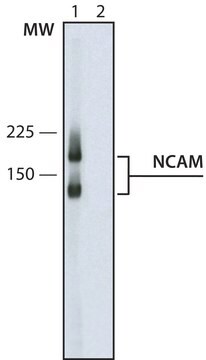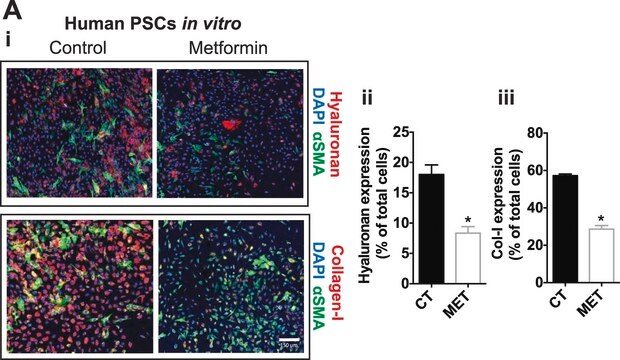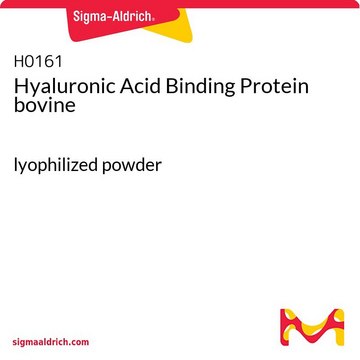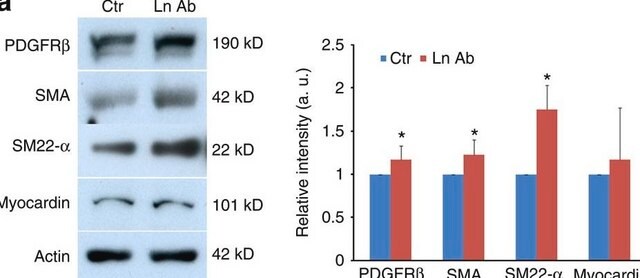MABF3137
Anti-MXRA8 Antibody, clone 9E9
Synonim(y):
Białko 8 związane z przebudową macierzy, Cząsteczka adhezji komórkowej zawierająca podwójną domenę Ig, Limitrin
About This Item
Polecane produkty
pochodzenie biologiczne
mouse
Poziom jakości
forma przeciwciała
purified antibody
rodzaj przeciwciała
primary antibodies
klon
9E9, monoclonal
masa cząsteczkowa
calculated mol wt 49.13 kDa
oczyszczone przez
using protein G
reaktywność gatunkowa
human
reaktywność gatunkowa (przewidywana na podstawie homologii)
mouse
opakowanie
antibody small pack of 100
metody
flow cytometry: suitable
inhibition assay: suitable
western blot: suitable
izotyp
IgG1κ
sekwencja epitopowa
N-terminal
numer dostępu Protein ID
numer dostępu UniProt
temp. przechowywania
-10 to -25°C
informacje o genach
human ... MXRA8(54587)
Specyficzność
Immunogen
Zastosowanie
Oceniane za pomocą cytometrii przepływowej w komórkach THP-1.
Analiza cytometrii przepływowej: 1,0 µg tego przeciwciała wykryło MXRA8 w milionie komórek THP-1.
Testowane zastosowania
Test hamowania: Reprezentatywna partia blokuje aktywność MXRA8 i zmniejsza przemieszczanie się komórek TH17 przez barierę krew-mózg. (Charabati, M., et al. (2022). Sci Transl Med. 14(626): eabj0473).
Analiza cytometrii przepływowej: Reprezentatywna partia wykryła MXRA8 w aplikacjach cytometrii przepływowej (Charabati, M., et al. (2022). Sci Transl Med.14(626): eabj0473).
Analiza Western Blotting: Reprezentatywna partia wykryła MXRA8 w aplikacjach Western Blotting (Charabati, M., et al. (2022). Sci Transl Med. 14(626): eabj0473).
Uwaga: Rzeczywiste optymalne rozcieńczenia robocze muszą być określone przez użytkownika końcowego jako próbki, a warunki eksperymentalne mogą się różnić w zależności od użytkownika końcowego.
Opis wartości docelowych
Postać fizyczna
Rekonstytucja
Przechowywanie i stabilność
Inne uwagi
Oświadczenie o zrzeczeniu się odpowiedzialności
Nie możesz znaleźć właściwego produktu?
Wypróbuj nasz Narzędzie selektora produktów.
Kod klasy składowania
12 - Non Combustible Liquids
Klasa zagrożenia wodnego (WGK)
WGK 2
Temperatura zapłonu (°F)
Not applicable
Temperatura zapłonu (°C)
Not applicable
Certyfikaty analizy (CoA)
Poszukaj Certyfikaty analizy (CoA), wpisując numer partii/serii produktów. Numery serii i partii można znaleźć na etykiecie produktu po słowach „seria” lub „partia”.
Masz już ten produkt?
Dokumenty związane z niedawno zakupionymi produktami zostały zamieszczone w Bibliotece dokumentów.
Nasz zespół naukowców ma doświadczenie we wszystkich obszarach badań, w tym w naukach przyrodniczych, materiałoznawstwie, syntezie chemicznej, chromatografii, analityce i wielu innych dziedzinach.
Skontaktuj się z zespołem ds. pomocy technicznej








